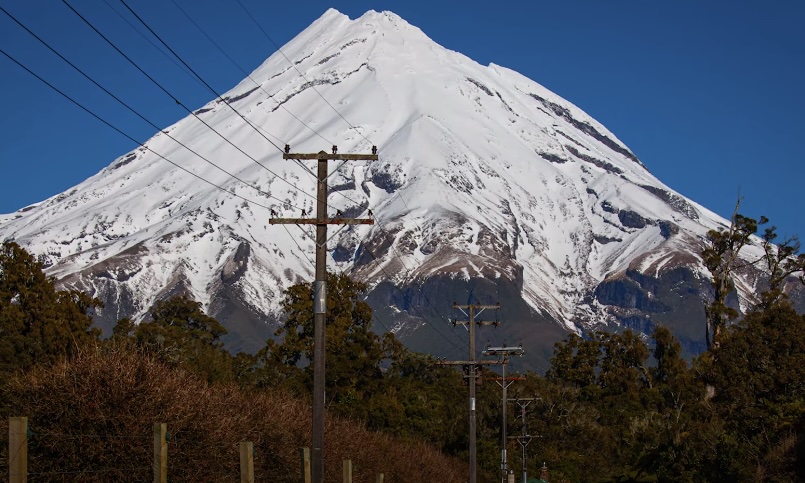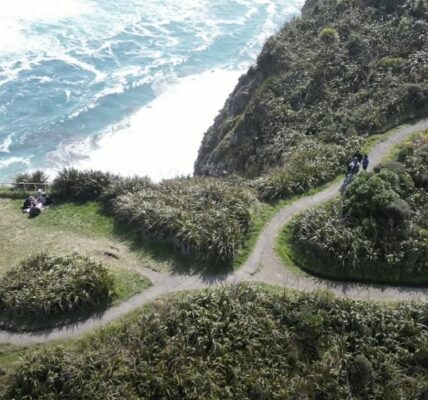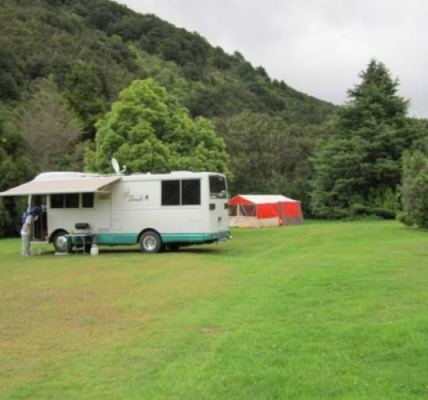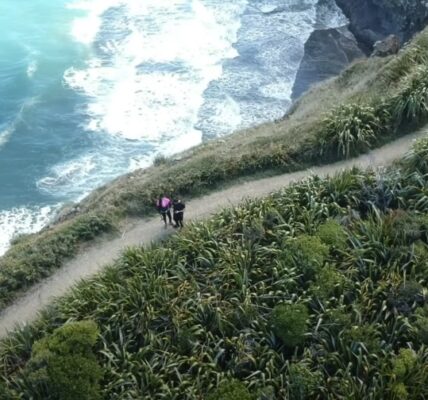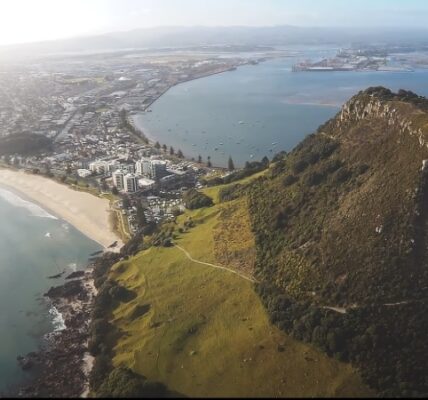Mount Taranaki, an iconic symbol of the Taranaki region in New Zealand, beckons adventurers with its lush landscapes and challenging trails. Known for its almost perfect conical shape, this dormant stratovolcano offers a range of walking and hiking paths that cater to various skill levels. This article delves into the best Mount Taranaki walks, providing enthusiasts with the necessary details to embark on these thrilling adventures.
Understanding Mount Taranaki
Before lacing up your hiking boots, it’s important to understand what makes Mount Taranaki unique:
Location
Mount Taranaki is strategically located in the western part of New Zealand’s North Island, nestled within the boundaries of Egmont National Park. This park spans approximately 33,534 hectares and encompasses a diverse range of landscapes, from dense rainforests to subalpine terrain.
- Egmont National Park: The park serves as a haven for biodiversity, housing numerous plant and animal species within its pristine wilderness. Hikers can explore a variety of ecosystems, including ancient forests, alpine meadows, and volcanic slopes, while enjoying stunning views of the surrounding countryside.
- Accessibility: Despite its remote location, Mount Taranaki is easily accessible from nearby towns such as New Plymouth. This accessibility makes it a popular destination for outdoor enthusiasts and nature lovers seeking adventure amidst the natural beauty of the North Island.
Height
Standing proudly at an elevation of 2,518 meters (8,261 feet) above sea level, Mount Taranaki ranks as the second-highest mountain in the North Island of New Zealand. Its towering peak dominates the skyline, offering breathtaking vistas from its summit.
| Aspect | Details |
| Challenging Yet Rewarding | The mountain’s impressive height presents a formidable challenge for hikers and climbers, yet the sense of accomplishment upon reaching the summit is unparalleled. On clear days, panoramic views extend across the surrounding landscape, including distant mountain ranges and the vast expanse of the Tasman Sea. |
Geological Significance
Mount Taranaki is a quintessential example of a stratovolcano, characterized by its steep slopes and conical shape. Its geological history is marked by intermittent eruptions, shaping the landscape and leaving behind a legacy of volcanic features.
- Intermittent Eruptions: Throughout its history, Mount Taranaki has experienced sporadic eruptions, with the most recent activity occurring in the mid-18th century. These eruptions have played a significant role in shaping the mountain’s terrain and creating distinctive volcanic formations.
- Volcanic Features: The mountain boasts a wealth of geological features, including lava flows, ash deposits, and crater formations, which provide valuable insights into its volcanic past. These features serve as a testament to the powerful forces of nature that have shaped Mount Taranaki over thousands of years.
Preparing for Your Hike
Hiking Mount Taranaki can be challenging due to its alpine climate and rugged terrain. Here’s how to prepare:
Weather Check
The weather on Mount Taranaki is notoriously unpredictable, with conditions often changing rapidly throughout the day. Therefore, it’s crucial to check the weather forecast before setting out on your hike.
- Weather Forecast: Stay informed about current and forecasted weather conditions for Mount Taranaki. Be prepared for cold temperatures, strong winds, and precipitation, even during the summer months.
- Layering: Dress in layers to adapt to changing weather conditions. Wear moisture-wicking base layers, insulating mid-layers, and waterproof outer layers to stay warm and dry throughout your hike.
Gear Up
Proper gear is essential for navigating the challenging terrain of Mount Taranaki and staying safe in variable weather conditions.
- Waterproof Clothing: Invest in high-quality waterproof and windproof clothing to protect yourself from rain, wind, and cold temperatures. A waterproof jacket, pants, and gloves are essential for staying dry and comfortable on the mountain.
- Sturdy Hiking Boots: Choose sturdy, ankle-supporting hiking boots with excellent traction to navigate the rocky and uneven terrain of Mount Taranaki safely.
- Navigation Tools: Carry essential navigation tools such as a topographic map and compass to help you navigate the trails and avoid getting lost in the wilderness.
- Food and Water: Pack ample food and water to sustain yourself during your hike. Opt for lightweight, high-energy snacks and carry at least two liters of water per person to stay hydrated throughout the day.
Safety First
Prioritize safety by taking necessary precautions and seeking guidance if needed, especially if you’re unfamiliar with alpine treks.
- Register Your Walk: Before starting your hike, register your intentions at the nearest visitor center or DOC office. Providing details about your planned route and expected return time ensures that authorities can initiate a search and rescue operation if necessary.
- Hiking with a Guide: If you’re inexperienced or unfamiliar with alpine treks, consider hiring a knowledgeable guide to accompany you on your hike. A guide can provide valuable expertise, enhance safety, and enrich your overall hiking experience.
Popular Mount Taranaki Walks
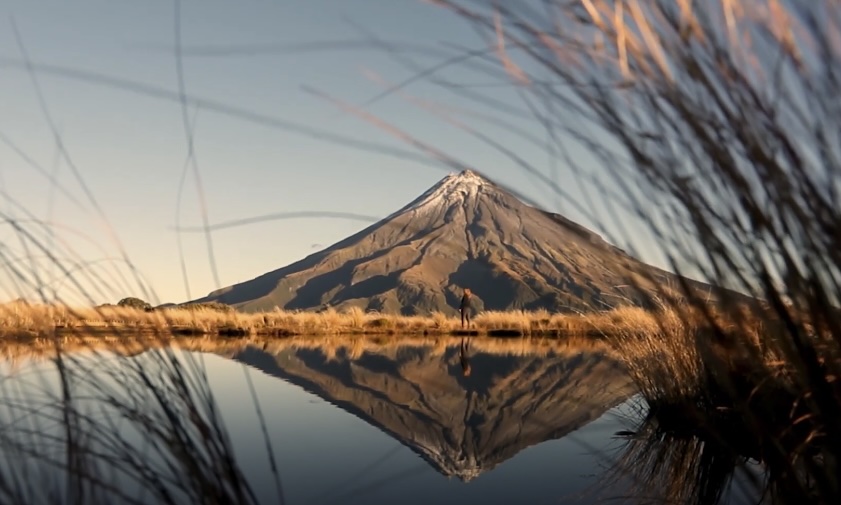
Mount Taranaki offers numerous trails that range from short walks to full-day hikes. Here’s a detailed look at some popular options:
The Pouakai Circuit
Embarking on the Pouakai Circuit promises an immersive journey through the breathtaking vistas of Mount Taranaki and its surrounding wonders. Here’s a comprehensive breakdown:
| Aspect | Details |
| Duration | 2-3 days |
| Difficulty | Intermediate to advanced |
| Highlights | Stunning Views: Feast your eyes on awe-inspiring panoramas of Mount Taranaki, the Pouakai Tarns, and the sprawling forests and lowlands below. |
The Pouakai Circuit is revered among avid trekkers for its challenging terrain and rewarding scenery, making it a bucket-list adventure for those seeking an unforgettable experience in the heart of nature.
The Summit Track
Ascending the Summit Track promises an adrenaline-fueled escapade to the pinnacle of Mount Taranaki, where panoramic vistas await. Delve into the specifics:
| Aspect | Details |
| Duration | 8-10 hours return |
| Difficulty | Advanced |
| Highlights | 360-Degree Views: Reach the summit for unparalleled vistas of the North Island, encompassing the Tasman Sea and the distant silhouette of Ruapehu Mountain. |
Despite its demanding nature, the Summit Track allures intrepid adventurers with the promise of unparalleled views that serve as a testament to the sheer magnificence of Mount Taranaki.
Veronica Loop Track
The Veronica Loop Track offers a tranquil retreat amidst the lush foliage of Mount Taranaki, catering to families and casual hikers alike. Here’s an in-depth look:
| Aspect | Details |
| Duration | 3 hours |
| Difficulty | Easy to intermediate |
| Highlights | Family-Friendly: Perfect for families, offering scenic views of the lower slopes and verdant vegetation without the need for strenuous ascents. |
With its gentle terrain and picturesque surroundings, the Veronica Loop Track provides an idyllic setting for leisurely strolls and bonding moments amidst nature’s embrace.
What to Expect Along the Trails
Each trail on Mount Taranaki presents unique landscapes and challenges:
Flora and Fauna
Mount Taranaki’s trails traverse through a variety of ecosystems, each hosting a wealth of plant and animal life. From dense rainforests to subalpine shrublands, the region boasts an impressive biodiversity.
- Rainforest Cover: Begin your journey amidst lush rainforest cover, where towering trees and vibrant foliage create a verdant canopy overhead. Keep an eye out for native species such as rimu, rata, and ferns, which thrive in the moist, temperate climate.
- Subalpine Shrublands: As you ascend higher along the trails, the landscape transitions to subalpine shrublands characterized by hardy plants adapted to harsher conditions. Look for species like tussock grasses, hebes, and alpine daisies, which dot the rugged terrain with bursts of color.
- Wildlife Encounters: Throughout your hike, be on the lookout for native wildlife that call Mount Taranaki home. You may spot native birds such as tui, kererū, and fantails flitting amongst the trees, while the elusive kiwi may be heard foraging in the undergrowth under the cover of darkness.
Volcanic Features
Mount Taranaki’s geological history is etched in its landscape, with striking volcanic features that bear witness to its fiery past.
- Crater Rim: Some trails offer views of the crater rim, where you can marvel at the sheer magnitude of Mount Taranaki’s volcanic crater. Formed thousands of years ago during volcanic eruptions, the crater serves as a reminder of the mountain’s tumultuous past.
- Lava Flows: Evidence of past eruptions can be seen in the form of lava flows that have sculpted the mountain’s slopes over millennia. These hardened lava formations add to the rugged beauty of the landscape, offering a glimpse into Mount Taranaki’s geological evolution.
- Hot Springs: In certain areas along the trails, you may encounter hot springs bubbling to the surface, a testament to the mountain’s geothermal activity. These natural thermal pools provide a rejuvenating respite for weary hikers, inviting them to soak in the warm waters amidst the tranquil surroundings.
Cultural Significance
Mount Taranaki holds profound cultural significance for the Māori people, who view it as a sacred landmark deeply intertwined with their spiritual beliefs and traditions.
- Pillar of the Sky: In Māori culture, Mount Taranaki is often referred to as a “pillar of the sky,” symbolizing a connection between the earthly realm and the heavens above. Its towering presence is imbued with spiritual significance, serving as a focal point for cultural practices and ceremonies.
- Legends and Myths: The mountain is steeped in legend and myth, with stories passed down through generations that speak of its origins and significance. These tales offer a glimpse into the rich tapestry of Māori folklore, highlighting the deep reverence and respect for Mount Taranaki held by the indigenous people of New Zealand.
- Cultural Practices: Along the trails, you may come across sacred sites and landmarks that hold significance in Māori culture. It’s important to show respect for these places, adhering to cultural protocols and practices out of reverence for the mountain and its cultural heritage.
Visitor Information

When planning your Mount Taranaki walks, consider the following amenities and regulations:
Accommodation
When planning your hike on Mount Taranaki, you’ll have several accommodation options to choose from, catering to different preferences and budgets.
- Camping Sites: For those seeking a closer connection to nature, camping sites are available in designated areas around the mountain. These sites offer basic facilities such as toilets and water access, allowing hikers to immerse themselves in the wilderness under the starlit sky.
- Mountain Huts: Alternatively, mountain huts provide shelter for hikers seeking refuge during their journey. These huts are strategically located along the trails and offer more substantial amenities, including bunk beds, cooking facilities, and communal areas. However, it’s essential to note that bookings are often required, especially during peak seasons, to secure your spot in these popular accommodations.
Regulations
As a protected area, Mount Taranaki is subject to specific regulations aimed at preserving its pristine environment and ensuring the safety of visitors.
| Aspect | Details |
| Leave No Trace Principles | Visitors are expected to adhere to the ‘Leave No Trace’ principles, which emphasize minimizing environmental impact by practicing responsible hiking habits. This includes packing out all waste, staying on designated trails, and respecting wildlife and vegetation. By following these principles, hikers can contribute to the conservation efforts of Mount Taranaki and maintain its natural beauty for future generations to enjoy. |
Local Services
While Mount Taranaki offers a rugged wilderness experience, nearby towns provide essential services and amenities to enhance your journey.
| Aspect | Details |
| New Plymouth | The nearby town of New Plymouth serves as a gateway to Mount Taranaki and offers a range of services to cater to hikers’ needs. Here, you’ll find supplies such as food, water, and camping equipment, ensuring you’re well-equipped for your adventure. Additionally, New Plymouth boasts a variety of dining options, allowing hikers to refuel with hearty meals after a day on the trails. For those seeking additional accommodation before or after their hike, New Plymouth provides a range of lodging options to suit every preference and budget. |
Conclusion
Mount Taranaki walks offer a splendid opportunity for adventure seekers to explore one of New Zealand’s most majestic natural landmarks. Whether you’re a seasoned hiker looking for your next big challenge or a casual walker wanting to enjoy the outdoors, Mount Taranaki has something to offer. Prepare adequately, respect the natural environment, and immerse yourself in the breathtaking beauty of Taranaki’s walking trails.
FAQ
The most favorable weather conditions are typically from late spring to early autumn, though weather can be unpredictable year-round.
Yes, several local companies offer guided tours that range from half-day walks to full-day summit attempts.
For lower elevation walks, basic hiking experience is sufficient. However, the summit track requires physical fitness and proper gear due to its steep and rocky nature.
Pets are not allowed within Egmont National Park as they may disturb native wildlife and habitats.
